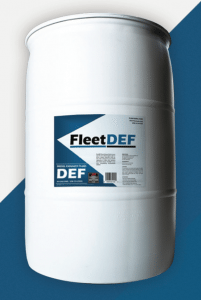Advanced emission control technology has greatly reduced the amount of toxins that heavy duty diesel trucks emit. With emission retrofits and other strategies, it’s possible to significantly reduce your fleet’s emissions.
Diesel exhaust fluid (DEF) is an important part of any fleet’s emission strategy.
DEF is made up of urea and de-ionized water. It breaks down toxic NOx emissions in diesel engines, converting it into harmless nitrogen and water.
DEF is used in Selective Catalytic Reduction (CDR) systems
CDR is the emission control system that uses DEF to reduce NOx toxins. Diesel emissions pass through an oxidation catalyst, where they get dosed with DEF. The urea in the DEF helps convert the NOx into nitrogen, rendering it harmless.
CDR systems can reduce diesel emissions by up to 90%, making it an extremely useful system for gaining compliance with EPA guidelines.
What vehicles should use DEF?
Any vehicle that has a CDR system installed needs DEF. This includes most diesel trucks built after 2010, and nearly all off-road diesel trucks. Other vehicles that have CDR systems include marine vehicles such as tugboats and recreational boats, as well as some SUVs and cars.
The advantages of FleetDEF
The DEF tank must be full in order for it to function, and a low tank will reduce the CDR’s ability to reduce emissions, and in some cases render trucks unable to start.
To avoid being stranded without any DEF, it’s a good idea to store DEF on-site, where your fleet can have access to it when necessary. FleetDEF (FleetServ’s proprietary brand of DEF) is sold in convenient drums and totes, making it easy to store on-site so you’re never stuck with a low tank.
For more information on FleetDEF, and our emission strategy solutions, contact FleetServ today!
